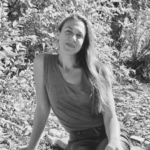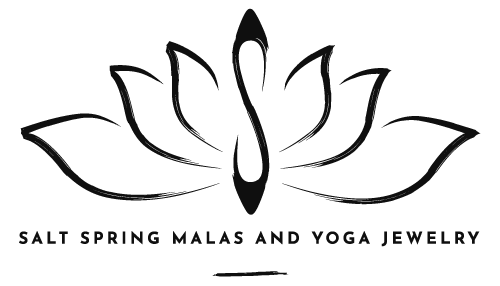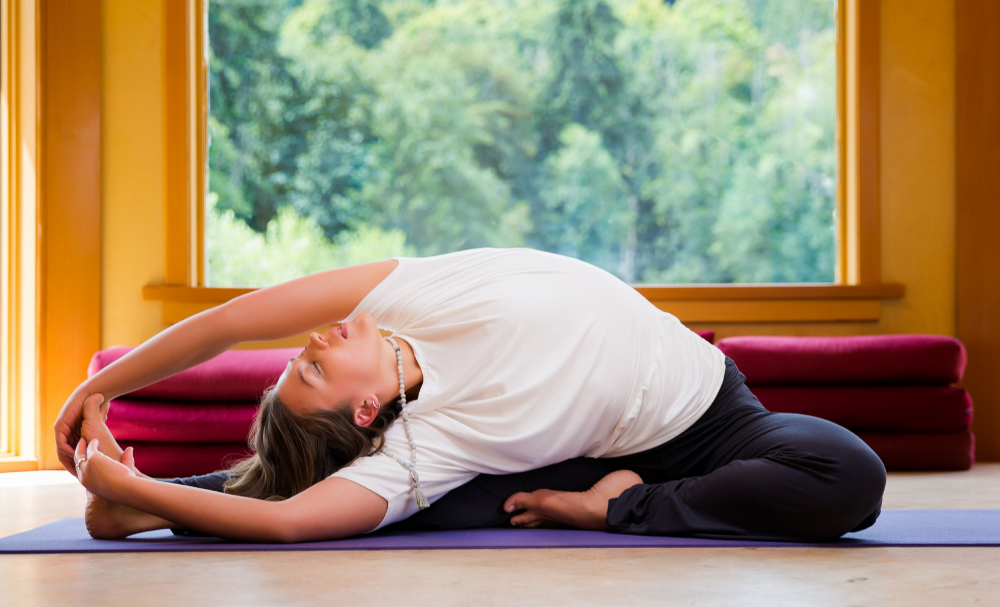By Lesley Anne Smith
Developing Quality in Yoga Practice
When we learn to respond to the body more, and impose on the body less, we develop an approach to yoga that encompasses the essence of the practice. Our approach is key. The approach to yoga, to movement, to mind, is really what constitutes the quality of our yoga practice. And this is what I care most about as a teacher. When we learn to cultivate this in our daily practice, this is when the practice bleeds into our lives, enriching the world around us in all our relationships and activities.
The beauty of cultivating a yoga practice as a whole is that it takes into consideration multiple aspects of our selves. The mind, ‘listen’, the heart, ‘be loving and compassionate’. The other, ‘Ahimsa, or non-violence’. These are all aspects of the daily practice, taken into asana or not.
The beauty of cultivating a yoga asana (posture) practice is that it gives you material. And not just any old movement material, but a vocabulary of postures that you can do anywhere. No one says you have to master all of them, just take what works for you. It’s perfect.
But we live in a time where we are prone to consistently lose touch with quality, or the heart of why we do things. Yoga or not, we are consistently challenged by external and internal pressure that reflects a culture gone awry. For those of us sensitive to this, it is one of our greatest challenges to be the change we wish to see. We need to resist falling into the void of victim, and work to know and understand that we matter, even against all odds. Our approach to life is challenged by our current times.
This brings me to one of the most profound teachings I have learned along my path – the concept of ‘non-ambition’. Non-ambition. It sounded terrible to my 25 year old ears when I heard the words. Aren’t I supposed to strive for greatness?! Non- ambition suggested sloth, giving up, and apathy. But, I will ask you now, that if you too feel resistant to these words, to drop your pre-conceptions and look at it in another way.
Let’s come back to the idea of quality. When you think of quality, what other words constitute its foundation?
Clarity, groundedness, energy, calm. I think of all of these.
So, how do we create quality? Would it not make sense to first release all the extras? In yoga we call this the monkey mind – the wants, the needs, the shoulds and should nots. We exist with thoughts that have the power to run our lives if we allow them.
These thoughts then have the ability to exist in our bodies, our tissues, down to the very cell.
So we practice non-ambition. It’s not about letting go of the greatness you are, but about letting go of all the extras that you are not. These layers of who we think we are and who we strive to become. It’s about peeling back the layers, finding clarity, and arriving into yourself. And yes, from there you act. From there, you live.
The body is an amazing tool for learning about the nature of the world around and within us. Our bodies function within natural law. Observe the body, and you observe nature in her finest work. So the study of Yoga will then help your body heal and thrive. However once we attune ourselves with nature as a whole, we also find a means to something much greater. Through the study of Yoga we cultivate a worldview, we cultivate a looking glass, we cultivate our personal part of the whole.
How do we cultivate all this while practicing non-ambition? Well, firstly, let me just say that non-ambition is a practice, and we practice it for a reason. It’s not going to come easy to everyone and that is just fine. Maybe it’s not the time for you. You can’t force this stuff. Again, it is more about allowing life to unfold, listening, and responding accordingly.
Listening and Responding in Yoga Practice
Before I found yoga, I did dance. I did dance until I became a dancer. That occurred over many years, and though I can’t mark it with a date, eventually it happened. The journey to become a dancer was also a journey toward embodiment, a journey toward finding freedom in my body.
It was similar with yoga. At first, you just do it. It might feel a little awkward, new, and uncomfortable. Over time, when you know it more, it moves you. It becomes easier and the other aspects of practice have more space to be cultivated alongside the poses.
And now, 5 years after completing a long term study of yoga through a traditional yoga apprenticeship, my practice has started to blend with the dancer in me.
There were two practices I learned through my dance training that still influence me today. Those are the practices of Somatic movement, and Laban movement analysis. Somatic movement has become a broad umbrella term, or at least this is how I see it. However in it’s essence it entails – moving with a heightened sense of the internal experience. It can often lead to moving the way your body wants to move. You see, if you are quiet enough in your body, it will do things. The idea of somatic movement practices is that you firstly Listen, and then Respond, or even simpler, Follow. This is how I learned to dance Me.
Laban movement analysis looks at movement patterns. Once you look at a pattern, you can also consciously expand out of that pattern, or use it to its fullest. This is what helped me become a choreographer. I learned how to read movement, how to direct movement, and overall evolve through movement. This is how I learned to participate in the evolution of Me.
Yoga is a life-long practice
When left to my own devices, my self-direction, a new practice took shape. My yoga practice has blended with those other aspects of myself. The gentle fluid dancer. The anatomically aware osteopathy student. The aging human. The woman, and all her parts.
Somatic movement practices and movement analysis have never left me. These are the essence of what I do now, in teaching, and in my manual therapy practice. It is simply how I have learned to approach the body.
I look at how the body likes to move, at its preferences and patterns, and slowly and consciously challenge those preferences, thus widening the somatic pathways and consequently expanding neurological pathways. Somatic experience leads to awareness, and awareness, to quality.
The classes I teach now are based in the Vijnana Yoga lineage, from a traditional Hatha yoga perspective. Like any class, we warm up, move through a variety of postures and sequences, work towards something that challenges the body out of its comfort zone, and we wind down. However, the emphasis on quality tends to lean my classes toward a sense of gentleness, while generating more strength in the body simultaneously. Our bodies do not thrive off constant pushing, and nor do our minds. It is very important to me that we encourage ease in the body. Once we find that ease, yes, then we can mindfully layer on the effort. It’s a constant dialogue between these two concepts, effort and ease, and they generate somewhat of a pulse or rhythm in the body when you focus on the play between them.
Ease in Yoga Practice
The other important aspect of finding ease in the effort is understanding your body through learning its mechanics. Quality of movement comes from quality in mechanics
of the body. More and more teachers are starting to de-bunk certain myths in the yoga body – such as in breathing mechanics, internal vs external rotation of the hip joint, and ‘correct’ alignment techniques. I try to come at it from a different way. I want you to understand mechanical variations so that you can make the choice as to what works best for you. There is no one way.
This is an important concept to understand. We are all very different while very much the same. We need to learn ourselves to understand our own needs. It is about developing your relationship with your own body.
All of this seems to circle back around to the understanding that we are perfect as we are. The more we settle into ourselves, the more we become ourselves. So, we approach the body as if it is perfect. We listen to it, work with it, and yes, challenge it some. However we remain mindful as to what we impose on ourselves, vs what is there for us to respond to. We cultivate our listening, our knowing, our understanding.
 Author: Lesley Anne Smith
Author: Lesley Anne Smith
Lesley is a yoga and movement teacher based in Canada with a background in contemporary dance. She founded Inner Space in 2020 as a means to provide somatic based education, exploration, and vitality through a combination of yoga, movement, and manual therapy practices. Lesley currently resides in Toronto, and is engaged in a long-term study of Osteopathy at the Canadian Academy of Osteopathy. Her studies are informed by her previous experiences of embodiment, and yet she is ever amazed by the endless learning regarding the human body, health and disease, and the process of healing.
Website: https://innerspace.offeringtree.com/
Read More Articles About Yoga


